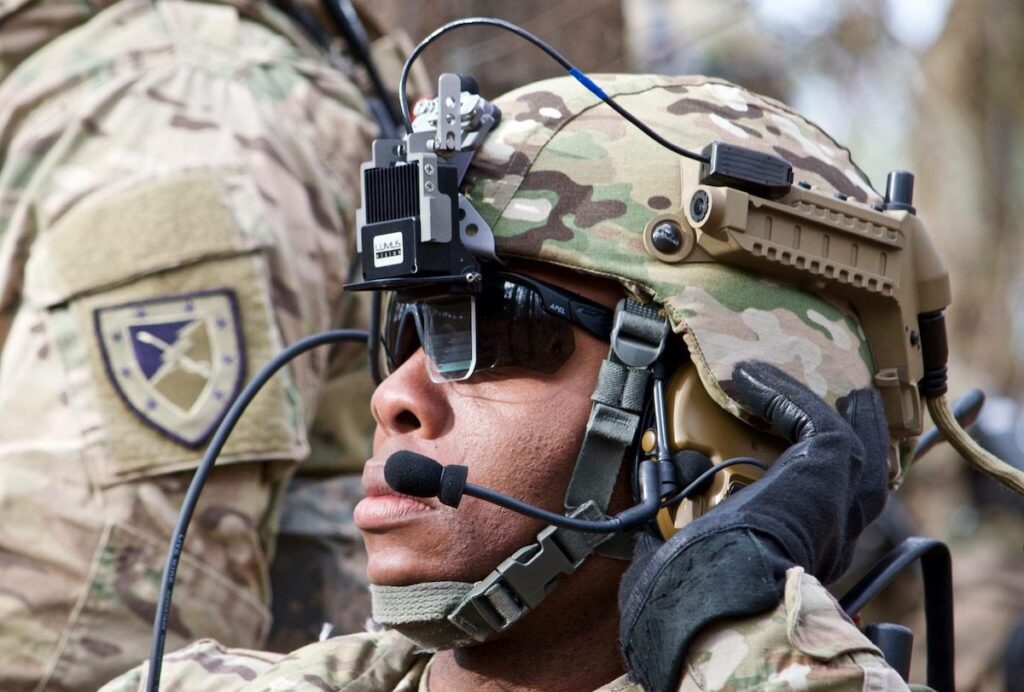In modern warfare, equipping soldiers with the latest technological advancements is crucial for enhancing their performance and safety on the battlefield. Enhanced military gear and wearable technology have revolutionized soldier performance by providing them with improved capabilities and situational awareness. Advancements in materials, design, and technology have led to the development of gear that enhances a soldier’s physical capabilities and overall effectiveness. This includes advanced armor systems that provide better protection, improved weapon systems, and wearable technology such as head-mounted displays and biometric sensors. Despite the challenges, future developments in exoskeleton technology, nanotechnology, and artificial intelligence show promising potential for further enhancing soldier performance.
Improving Soldier Performance: Enhanced Military Gear and Wearable Technology
Introduction
In modern warfare, it is crucial to equip soldiers with the latest technological advancements to enhance their performance and safety on the battlefield. One area that has seen significant advancements is military gear and wearable technology. These innovations have revolutionized soldier performance, providing them with enhanced capabilities and improved situational awareness. With the integration of HTML headings, we can explore the various aspects of this topic in detail.
The Importance of Enhanced Military Gear
Enhanced military gear plays a vital role in improving soldier performance. Traditional equipment only provided basic functionalities, but advancements in materials, design, and technology have led to the development of gear that enhances the soldier’s physical capabilities and overall effectiveness.
Armor and Protection
Modern military gear includes advanced armor systems that provide better protection against bullets, shrapnel, and even chemical and biological threats. This gear utilizes lightweight materials such as advanced ceramics, aramid fibers, and composites, which offer a higher level of protection without compromising mobility. HTML headings allow for the categorization of this subsection and help structure the article efficiently.
Weapon Systems
Improved weapon systems have become an integral part of enhanced military gear. These systems include advanced rifles, handguns, and explosives with improved accuracy, reliability, and ease of use. HTML headings make it possible to explore each weapon category’s advancements, discussing factors such as fire rate, range, and compatibility with other military technologies.
The Role of Wearable Technology
Wearable technology has revolutionized soldier performance, providing real-time data, improved communication capabilities, and enhanced situational awareness. This technology has found its way into various aspects of military gear, from helmets and uniforms to gloves and boots.
Head-Mounted Displays
Head-mounted displays (HMDs) are an example of wearable technology that significantly enhances soldier performance. These devices provide soldiers with a heads-up display (HUD) that integrates information from various sources such as GPS, thermal imaging, and live video feeds. HTML headings help organize the discussion of HMDs and their impact on soldier performance.
Biometric Sensors
Biometric sensors embedded in military gear allow for real-time monitoring of a soldier’s vital signs, including heart rate, body temperature, and hydration levels. This information helps commanders and medics assess the soldier’s physical condition and make informed decisions. HTML headings categorize the discussion of biometric sensors and their role in optimizing soldier performance.
Challenges and Future Developments
While enhanced military gear and wearable technology have made significant strides in improving soldier performance, there are still challenges that need to be addressed. These challenges include power supply limitations, durability in extreme conditions, and user interface design.
The future of military gear and wearable technology looks promising. Researchers and engineers are continually working towards developing even more advanced materials and technologies, including exoskeleton suits for enhanced strength and resilience, nanotechnology for self-healing gear, and artificial intelligence integration for better decision-making support.
Exoskeleton Technology
Exoskeleton technology has the potential to revolutionize soldier performance by augmenting their physical abilities. These suits provide increased strength, endurance, and load-carrying capacity, reducing fatigue and improving overall performance on the battlefield.
Nanotechnology
Nanotechnology advancements have the potential to make military gear self-healing, increasing its durability and extending its lifespan. By integrating self-healing materials into the design of gear, soldiers can focus on their mission without worrying about gear maintenance or failure.
Artificial Intelligence
Artificial intelligence (AI) has the potential to transform soldier performance by providing decision-making support. AI algorithms can analyze vast amounts of data in real-time, assisting soldiers in identifying threats, suggesting tactics, and optimizing their actions based on the evolving battlefield situation.
Conclusion
Enhanced military gear and wearable technology play a crucial role in improving soldier performance. HTML headings have helped categorize and structure the article, enabling a comprehensive exploration of different aspects of this topic. As technology continues to evolve, soldiers will undoubtedly benefit from further advancements in gear and wearable technology, paving the way for more efficient and effective military operations.
